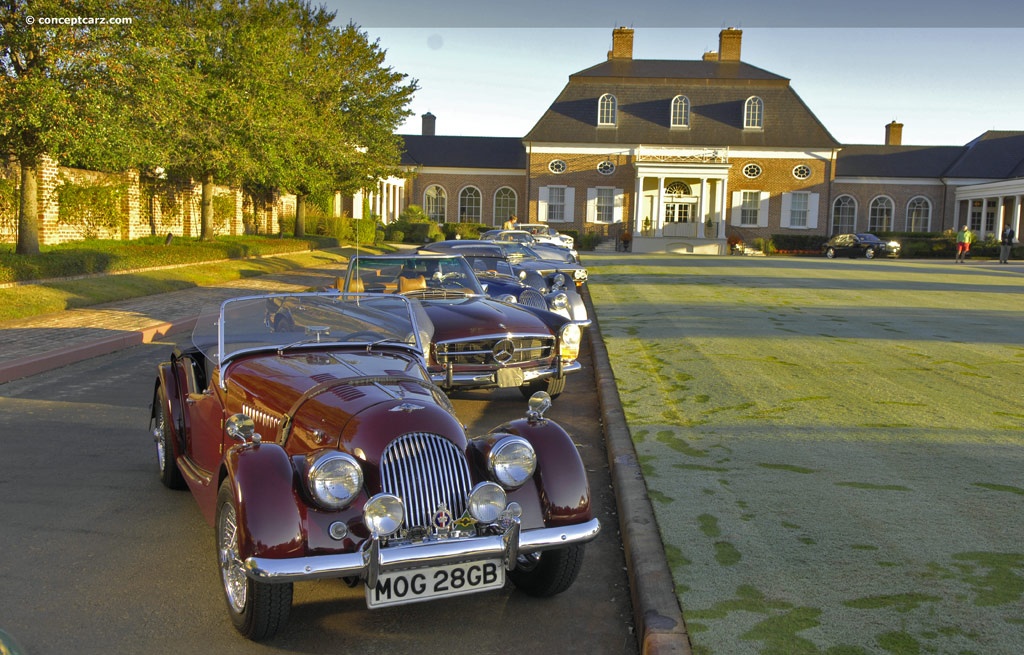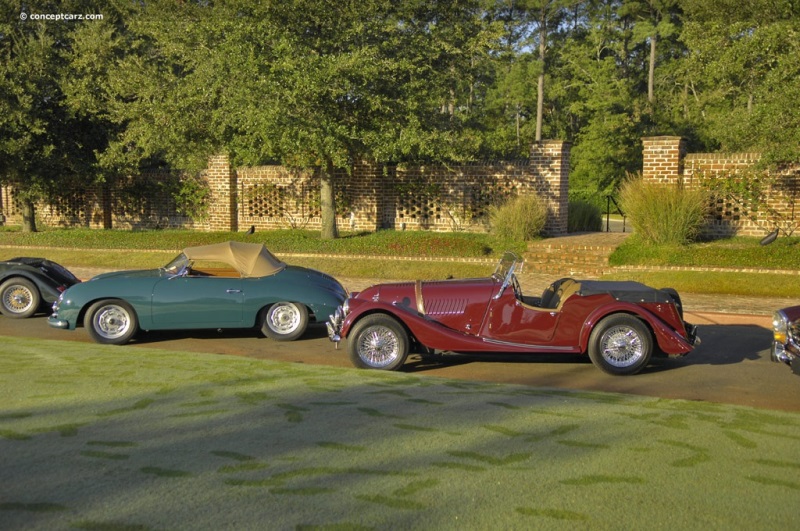1964 Morgan Plus Four Navigation
- 1964 Morgan Plus Four Menu
- Article
- Image gallery
- Valuation
- Specifications
- Profiles
- Production figures
Morgan
Similar Automakers
Similarly Sized Vehicles
from 1964
Similarly Priced Vehicles
1964 Morgan Plus Four Vehicle Profiles
Recent Vehicle Additions
Performance and Specification Comparison
Price Comparison
$2,660
Plus Four Specification Comparison by Year
Year
Production
Wheelbase
Engine
Prices
96.00 in.
4 cyl., 121.50 CID., 90.00hp
4 cyl., 121.50 CID., 100.00hp
4 cyl., 130.47 CID., 115.00hp
4 cyl., 121.50 CID., 100.00hp
4 cyl., 130.47 CID., 115.00hp
$2,600 - $2,700
96.00 in.
4 cyl., 121.50 CID., 90.00hp
4 cyl., 130.47 CID., 105.00hp
4 cyl., 130.47 CID., 105.00hp
4 cyl., 130.47 CID., 120.00hp
4 cyl., 130.47 CID., 105.00hp
4 cyl., 130.47 CID., 105.00hp
4 cyl., 130.47 CID., 120.00hp
$2,650 - $2,960
96.00 in.
4 cyl., 130.47 CID., 100.00hp
4 cyl., 130.47 CID., 105.00hp
4 cyl., 130.47 CID., 115.00hp
4 cyl., 130.47 CID., 105.00hp
4 cyl., 130.47 CID., 115.00hp
$2,960 - $3,350
Related Automotive News

POW! BAM! ZOOM! The Original 1966 TV Batmobile To Cross Auction Block At Barrett-Jackson Scottsdale
Holy Grail of TV Star Cars to be Sold for First Time January 19, 2013
Barrett-Jackson, the Worlds Greatest Collector Car Auctions™, announced today that it will offer one of the most recognized and popular pieces of entertainment history worldwide,...

1963 Corvette Pilot Car to Cross the Block at Vicari December New Orleans Auction
The Vicari Auction Company announces its 3rd annual New Orleans Classic Auto Festival Dec. 1, 2012, at the famous Mardi Gras World in New Orleans, La.
More than 200 classic and muscle cars will cross the block, led by a rare 1963 Chevrolet...

Inaugural Concours d'Elegance of Texas deemed a massive success
Houston, Texas. May 15, 2012. Last weekend, the award winning La Torretta Lake Resort %26 Spa in Montgomery played host to the biggest and most prestigious classic car weekend in Texas, welcoming thousands of visitors through its gates for the inaugural...

Allard Automobiles Featured at 2012 Glenmoor Gathering
Allard automobiles will be one of the featured marques at the 2012 Glenmoor Gathering. More than 20 Allard automobiles are expected to be on display during the Glenmoor Gathering weekend. Allards featured lightweight bodies built in England but were...

Legendary Tucker Automobiles on Display at 2012 Glenmoor Gathering
Several 1948 Tucker Automobiles will be part of the show field at the 2012 Glenmoor Gathering, including an unrestored Tucker from the Gilmore Car Museum Collection (above). A total of 51 cars were built before production stopped and most of them survive...






























